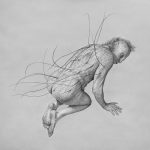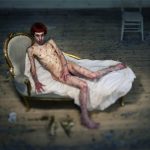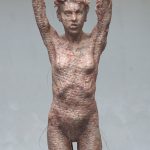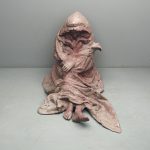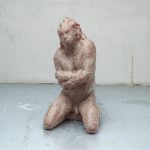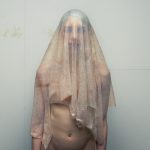-
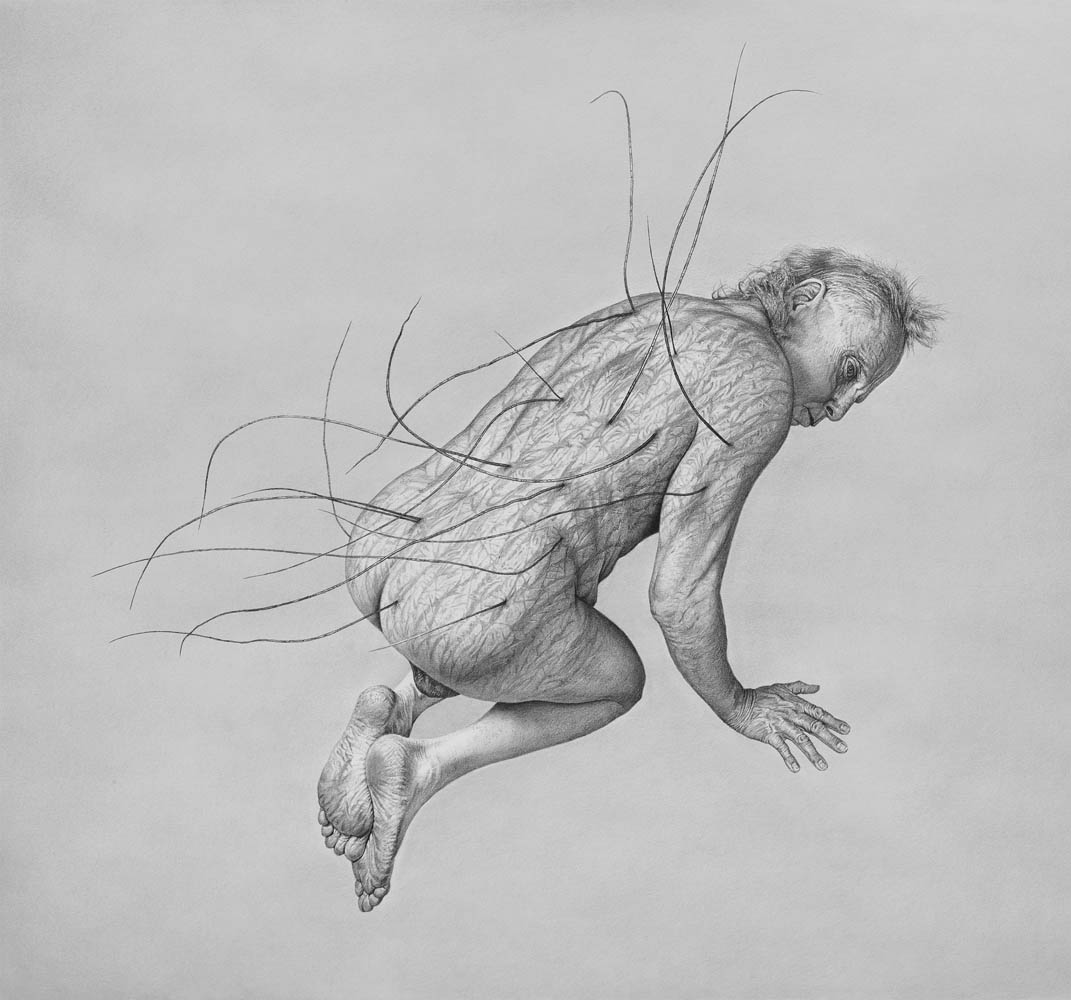
Lanugo
Graphite on paper; 51 x 54.5 cm.
This drawing is from a series that focuses on the body’s largest organ: skin. I was interested in skin as a site of disruption rather than reassurance; traditionally skin is presented as a smooth, impenetrable facade, here it is a porous, uncertain boundary. Body hair and skin texture are magnified, raising questions about bodily perfection and idealized imagery in an era of obsessive scrutiny of the body. Skin, like drawing, is a site of imperfect memory and inscription. Both can function like a sheet or interface that records and encompasses time. Both highlight the contiguity between looking and touching.
-

-

Second Skin
Graphite on paper; 59 x 78 cm.
This drawing is from a series that focuses on the body’s largest organ: skin. I was interested in skin as a site of disruption rather than reassurance; traditionally skin is presented as a smooth, impenetrable facade, here it is a porous, uncertain boundary. Body hair and skin texture are magnified, raising questions about bodily perfection and idealized imagery in an era of obsessive scrutiny of the body. Skin, like drawing, is a site of imperfect memory and inscription. Both can function like a sheet or interface that records and encompasses time. Both highlight the contiguity between looking and touching.
-

-
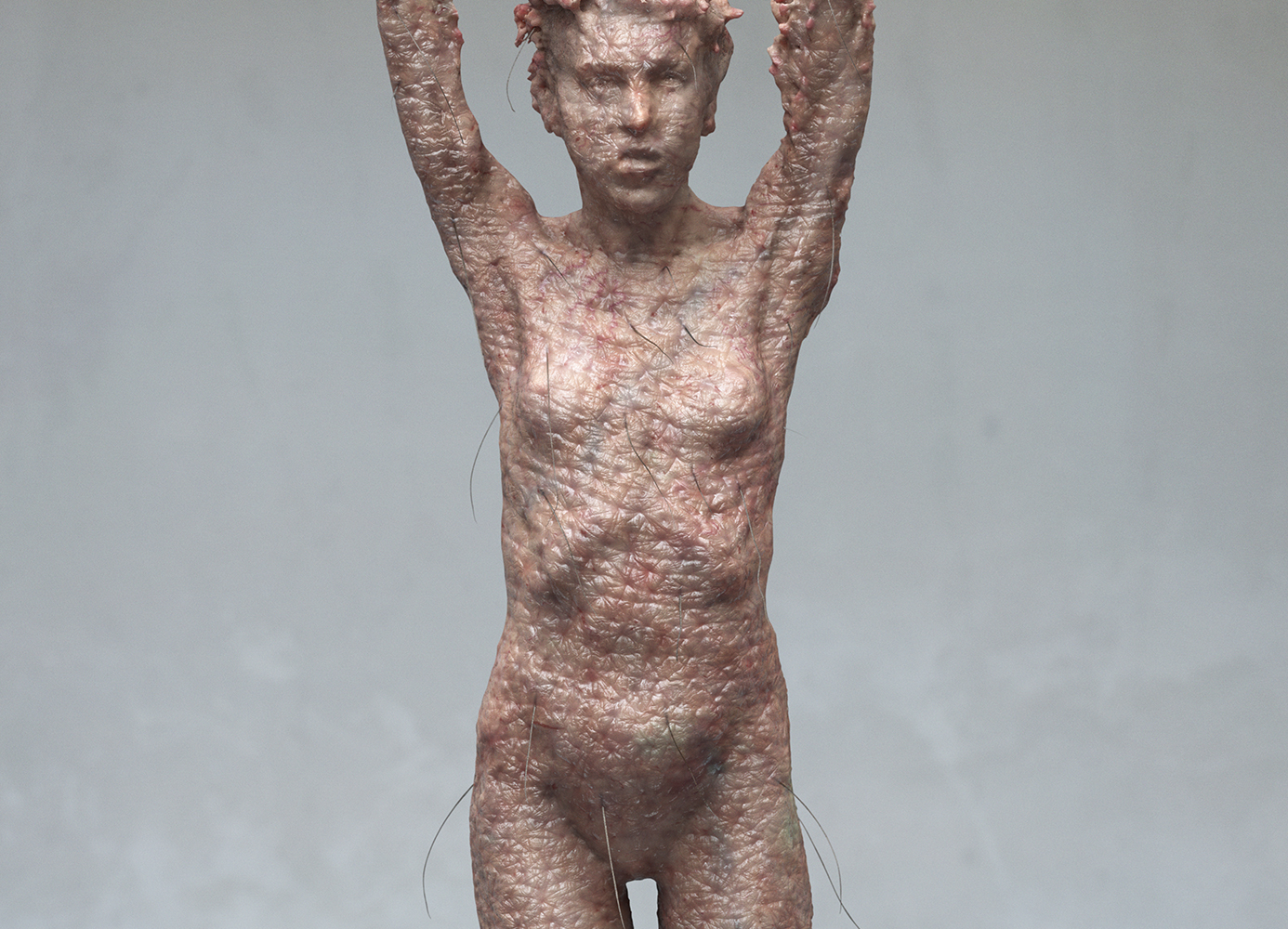
-

-

-
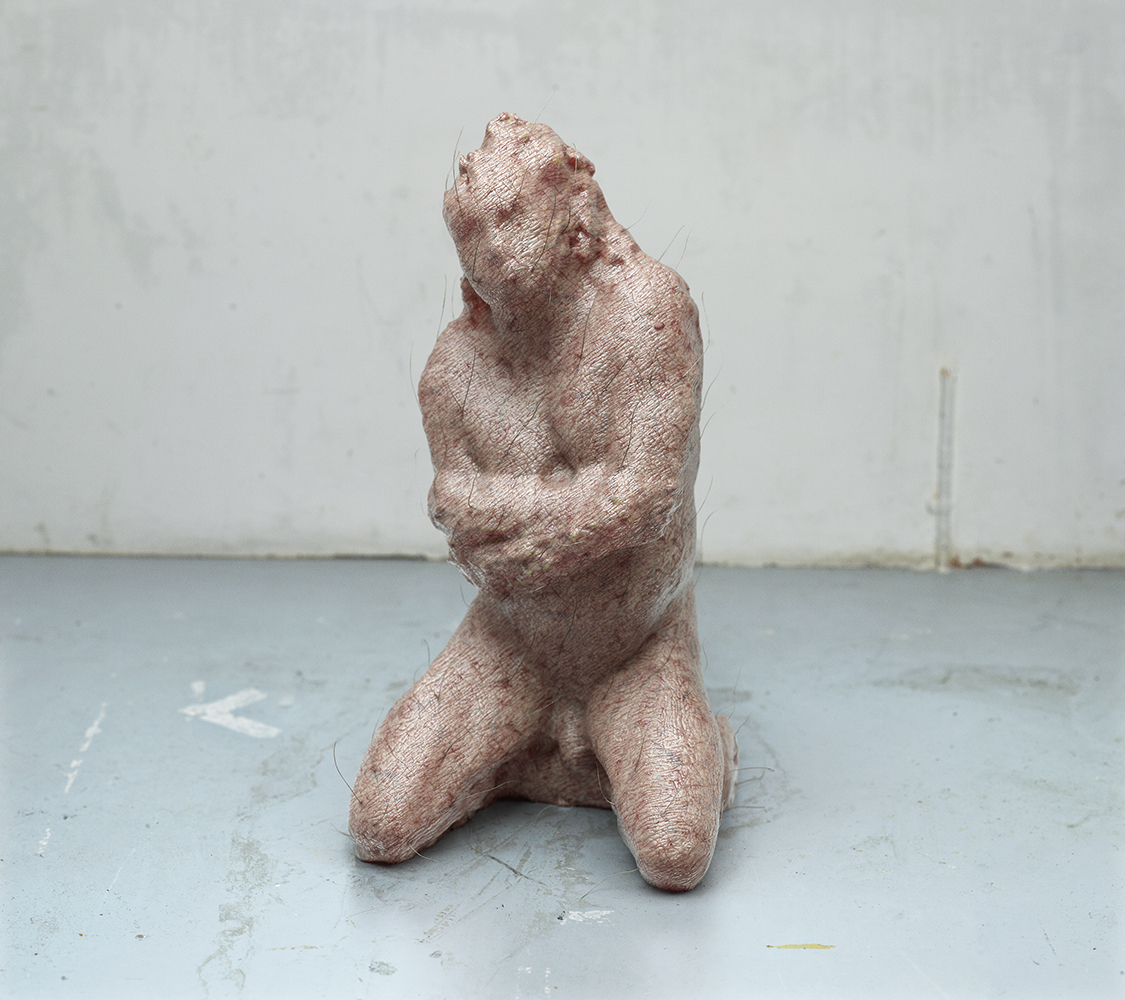
-

-

-

-
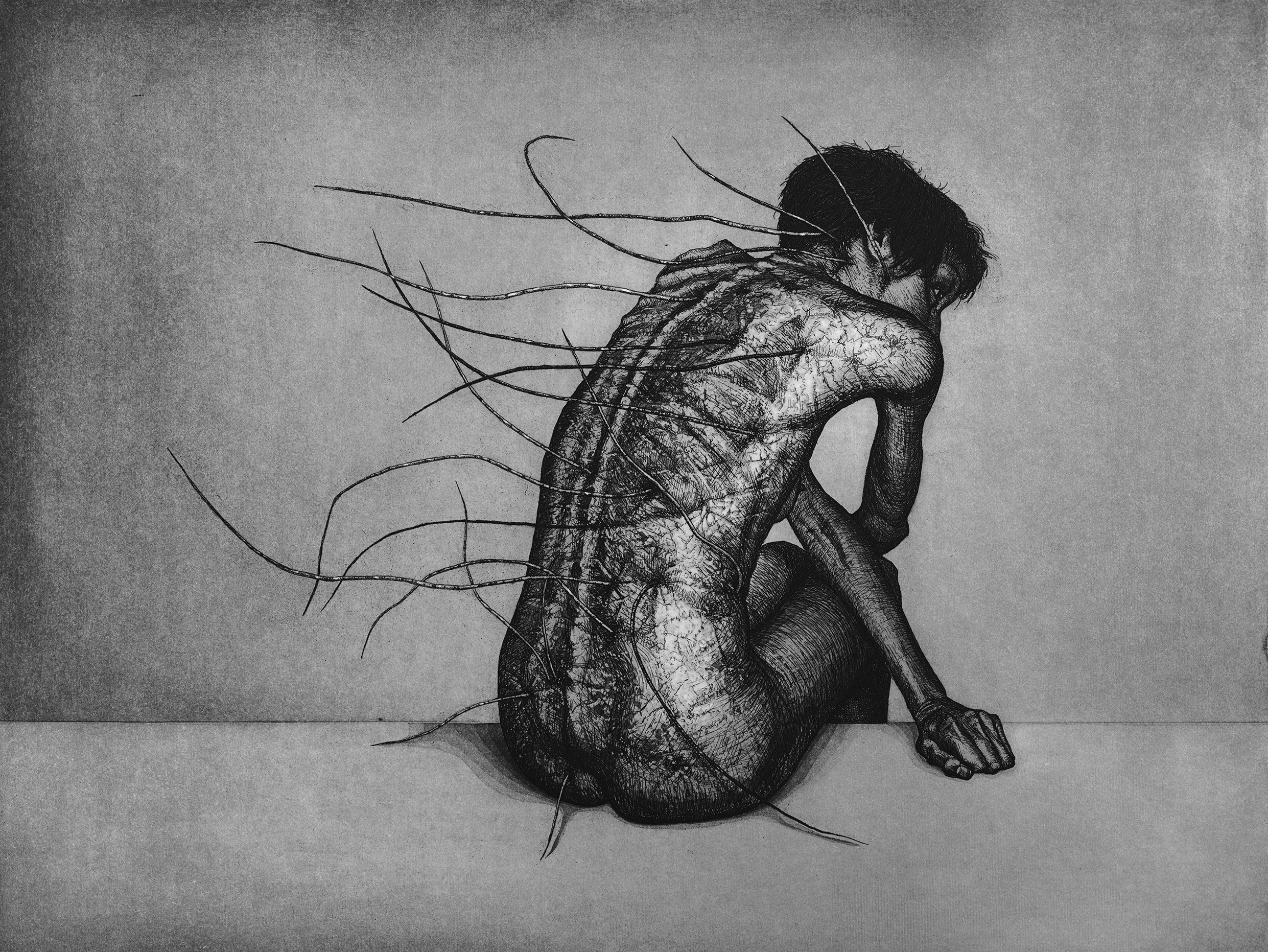
Lanugo 3
Etching on paper; 30 x 40 cm.
This etching is from a series that focuses on the body’s largest organ: skin. I was interested in skin as a site of disruption rather than reassurance; traditionally skin is presented as a smooth, impenetrable facade, here it is a porous, uncertain boundary. Body hair and skin texture are magnified, raising questions about bodily perfection and idealized imagery in an era of obsessive scrutiny of the body. Skin, like drawing, is a site of imperfect memory and inscription. Both can function like a sheet or interface that records and encompasses time. Both highlight the contiguity between looking and touching.

